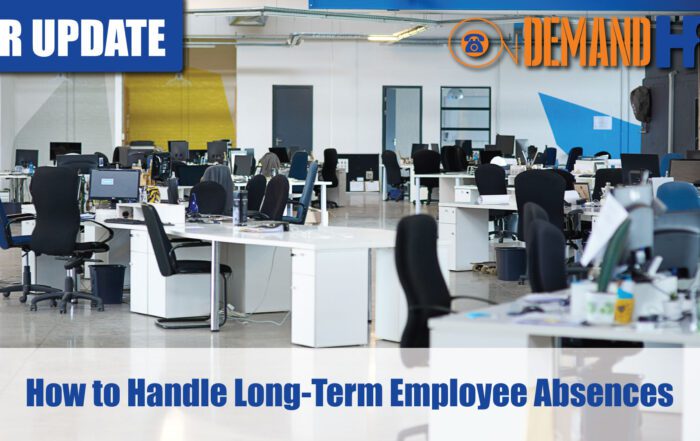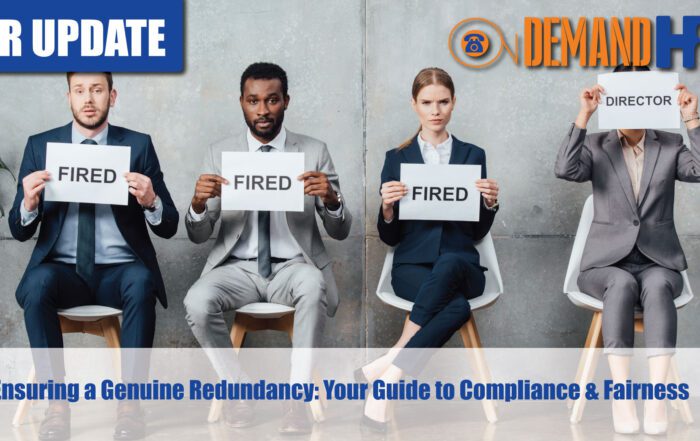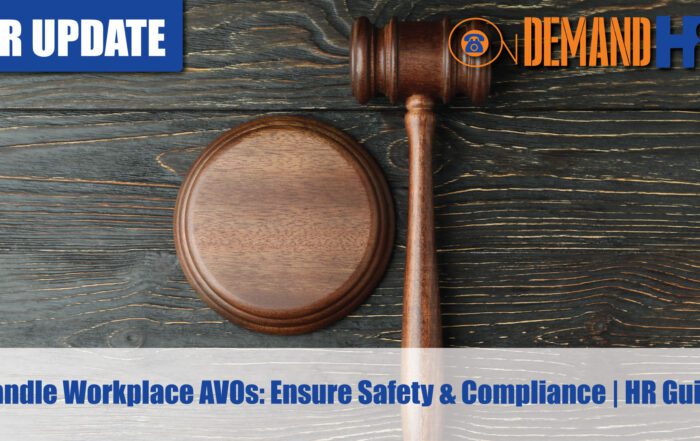Casual Conversion Changes September 2021
There has been some significant legislative changes relating to casual employees in 2021. Recently we reached out to our On Demand HR members to make sure they were aware of the changes, how they impacted their businesses and the immediate steps that they should be taking to ensure their business remains compliant.
We considered this advice to be important enough to put together this video and share with our wider audience.
Please see below for a full transcript of this video
Share the HR or workplace relations challenge facing your business and one of our experienced consultants will be in touch within 24 hours with a strategic action plan or discover the best strategy yourself by accessing out free online training library.
Transcript
There has been some significant legislative changes relating to casual employees in 2021. Recently we reached out to our On Demand HR members to make sure they were aware of the changes, how they impacted their businesses and the immediate steps that they should be taking to ensure their business remains compliant.
We considered this advice to be important enough to put together this video and share with our wider audience.
These changes were formed earlier in March this year, via the Fair Work Amendment (Supporting Australia’s Jobs and Economic Recovery) Bill 2021 (Bill) that passed Parliament. This Bill tackled the previous cases where casual employees became entitled to leave entitlements on top of their casual loading. The key fundamentals this bill provides is a statutory mechanism for casual conversion.
Remember, a sporadic casual employee with differing shifts period to period or ever changing availability, lack of lengthy service and has no firm commitment to ongoing employment from both the employer and employee perspective will not covered by these changes and you can freely continue to engage these employees as long as you have completed stage one.
As of 27 September 2021, the transition stage to these changes comes to an end. Pending on the size of the business there are differing obligations a business has. The business size is driven by the permanent head count (including long serving casuals) of the business at the time of the test. For the purposes of this communication:
- Small Employer = Less than 15 employees
- Large Employer = 15 or more employees
Small employers do not have to offer long serving casual employees conversion, but employees can make a request to convert if they meet the requirements for making a request.
Large employers will have an obligation to offer conversion by the 27 September 2021, to any casual employee who meets the test. Following this, they must consider and respond to any request of an eligible casual employee in writing within 21 days.
We will focus in on what steps are recommended to be taken for large employers, however if you are a small employer and would like some guidance, please do not hesitate to reach out to us at ondemandhr.com.au
For large employers, your first step is to audit your casual workforce and list out all casual employees who you are obligated to discuss conversion with.
Those casual employees who have:
- been employed for at least 12 months
- worked a regular pattern of hours for at least the last 6 months on an ongoing basis and
- their regular hours could continue as a permanent employee without significant changes.
The second step, that has to be completed by 27 September 2021, is to circulate and issue a memorandum to eligible casual employees and supply the Casual Employment Information Statement to them at the same time. The memorandum addresses the offering and for them to individually consult with the business if they seek to convert. It also points out the financial disadvantage of such conversion as a replacement for leave entitlements.
Pending the work and availability of a casual it can be more cost effective to engage a permanent employee over a casual employee even after you bank leave entitlement. In our experience though, it is quite rare casual employees will request conversions, purely and simply because of the reduction in the applicable hourly rate. Having said that, there may be some situations where requests are made, and we can certainly discuss the merits of any requests with you as they arise.
So that wraps up the brief summary of the changes for casual employees and the steps that we are recommending businesses to take. If you have any questions relating how this applies or what to do for your business, please do not hesitate to contact us by visiting ondemandhr.com.au






